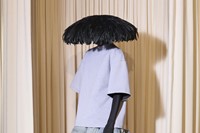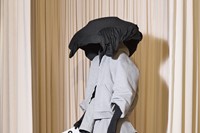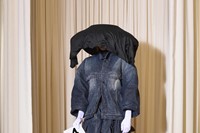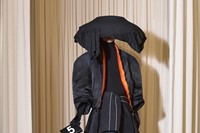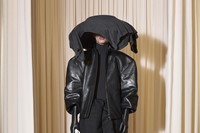“No-one really needs couture, to be honest.” Backstage in Balenciaga’s couture salons on the Avenue George V, Demna was saying the unspeakable, after a couture show guaranteed to rile up an online audience, possibly like no other. Why? Because rather than arch reverence to Cristóbal Balenciaga’s oeuvre, to ballgowns and sway-backed suits and barrel-line coats, this collection melded couture with the subcultural inspirations that have shaped Demna’s own outfit over the past decade. And the results didn’t look like anything ever paraded through a Balenciaga salon before.
Well, they did, if you squinted a bit – there were cocoon backs, flying saucer headgear, neat gloves, clutched number-cards for every ensemble. But those silhouettes were applied to sweatshirting, down jackets, denim, shredded and distressed layers, heavy-metal groupie T-shirts. Indeed, the big idea this time, Demna said, was to fuse archetypes of Cristóbal’s last 20 years of couture – “to decode the principle elements of Cristóbal” – with his own obsessions. “I always reference archive first, I want to connect to the history because lots of people don’t know there was this history,” he said quietly. “But I was almost doing that repetitively and systematically … this was something personal. I needed to bring that equilibrium.” Those codes for Demna were easily summed up: fabric innovation, extravagant hats, three-quarter sleeves, and the importance of the profile of a garment. All were present and correct, but twisted into Demna’s own take. A cocoon-back hooded sweatshirt? Casual observers would be aghast.

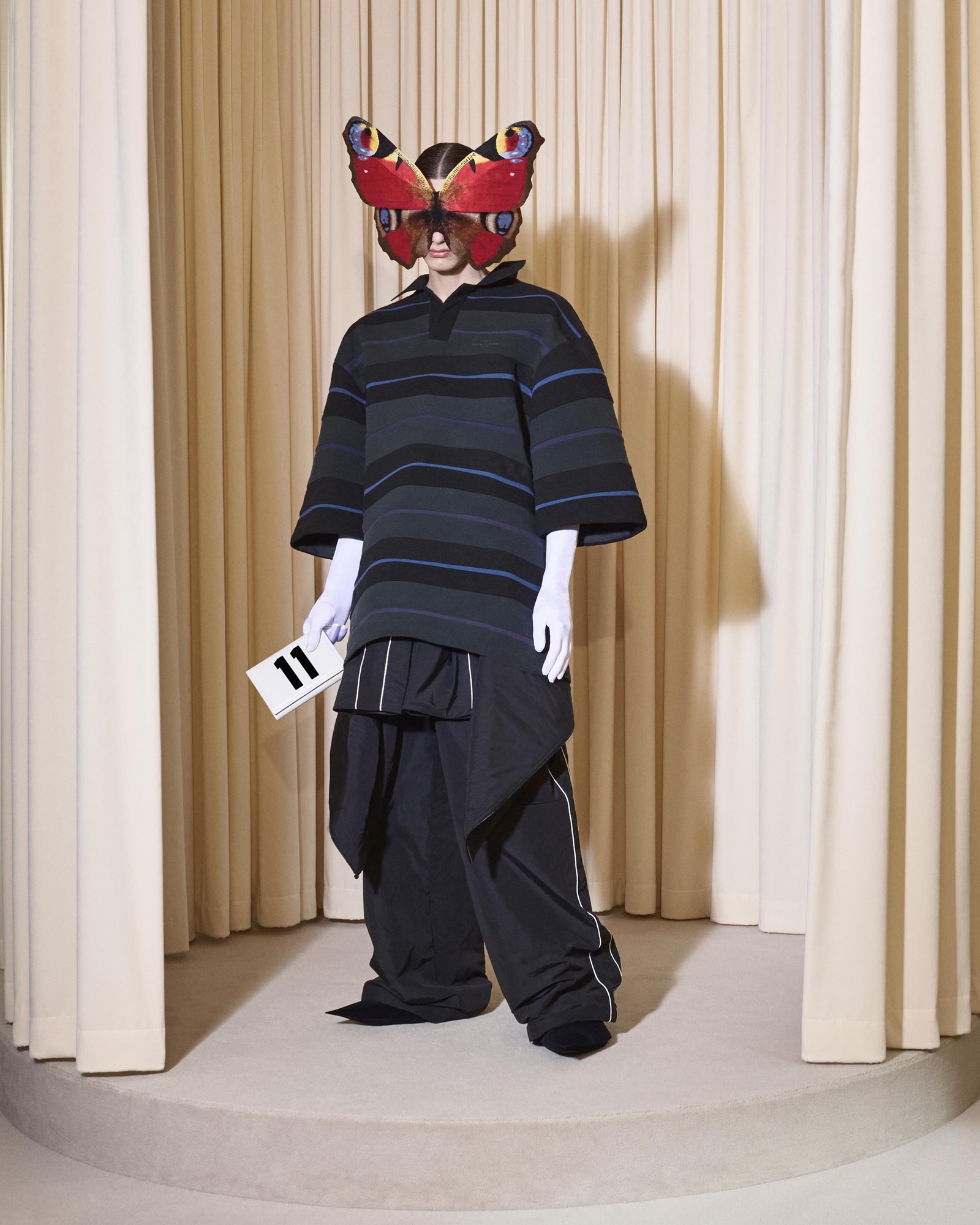
But look deeper, and you’ll see how these clothes make a compelling case for the anachronistic existence of couture in 2024. Prints were actually hand-painted (“they took weeks”), denims specially-loomed, a flannel shirt executed in silk hand-tuffetage embroidery. “It was a lot of work,” Demna stated. “We can actually have the luxury of time, in order to experiment. To not only use existing couture techniques but come up with new things that can enrich those techniques.”
Balenciaga only shows one couture collection a year, hence ceaseless fabric research and toying with artisan craft. Couture here is a laboratory for experimentation – the house released a series of videos that detailed the painstaking, near impossible work compressed into pieces to create a trompe l’oeil of distress through painstaking precision, whether a cracked print or a torn beaded knit dress (actually, the result of specially-devised embroideries). “Every T-shirt, every mundane garment is lined in scuba satin to be able keep that shape,” Demna recalled. It made you look at those pieces with new eyes, sculpted as they were with intention.
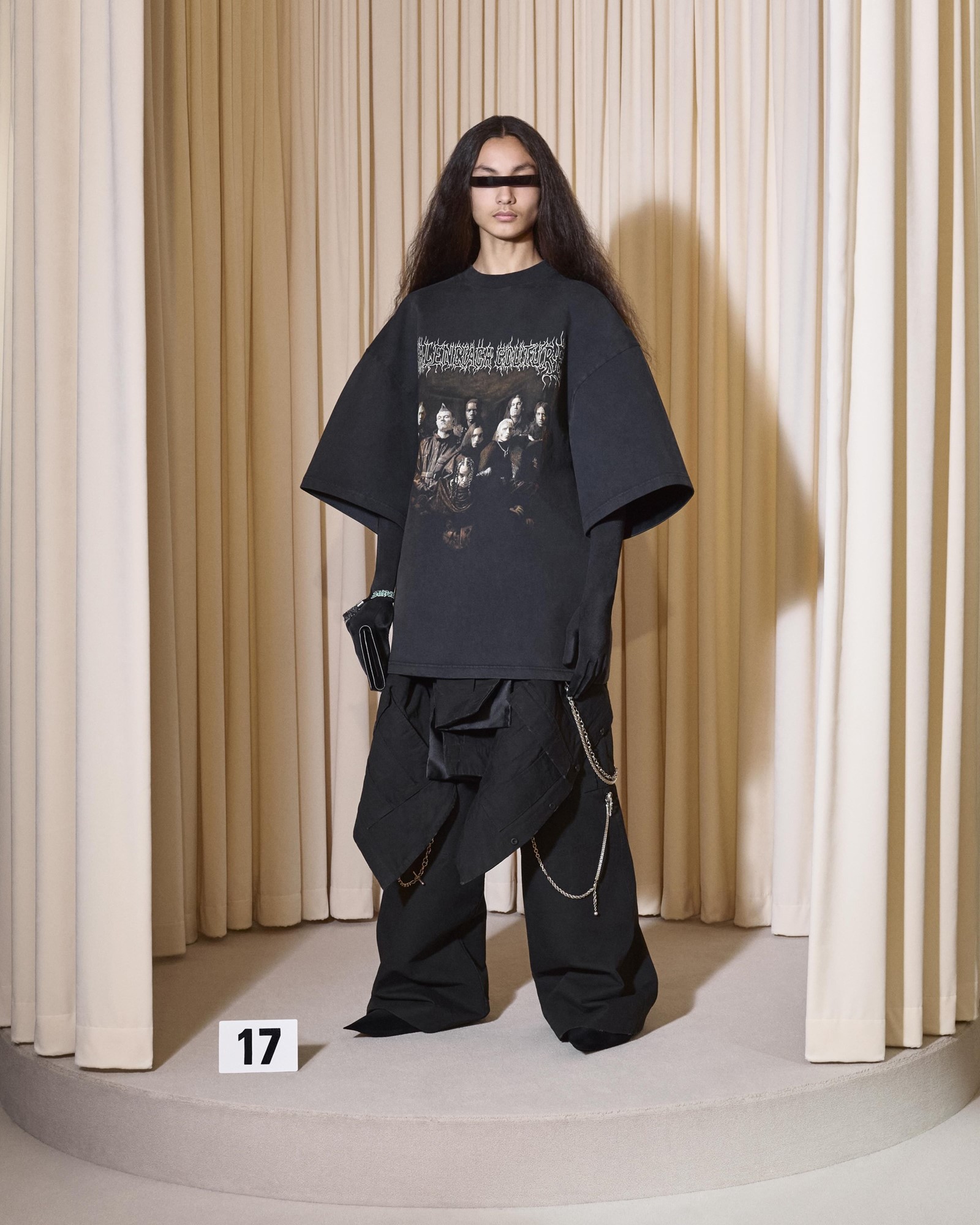
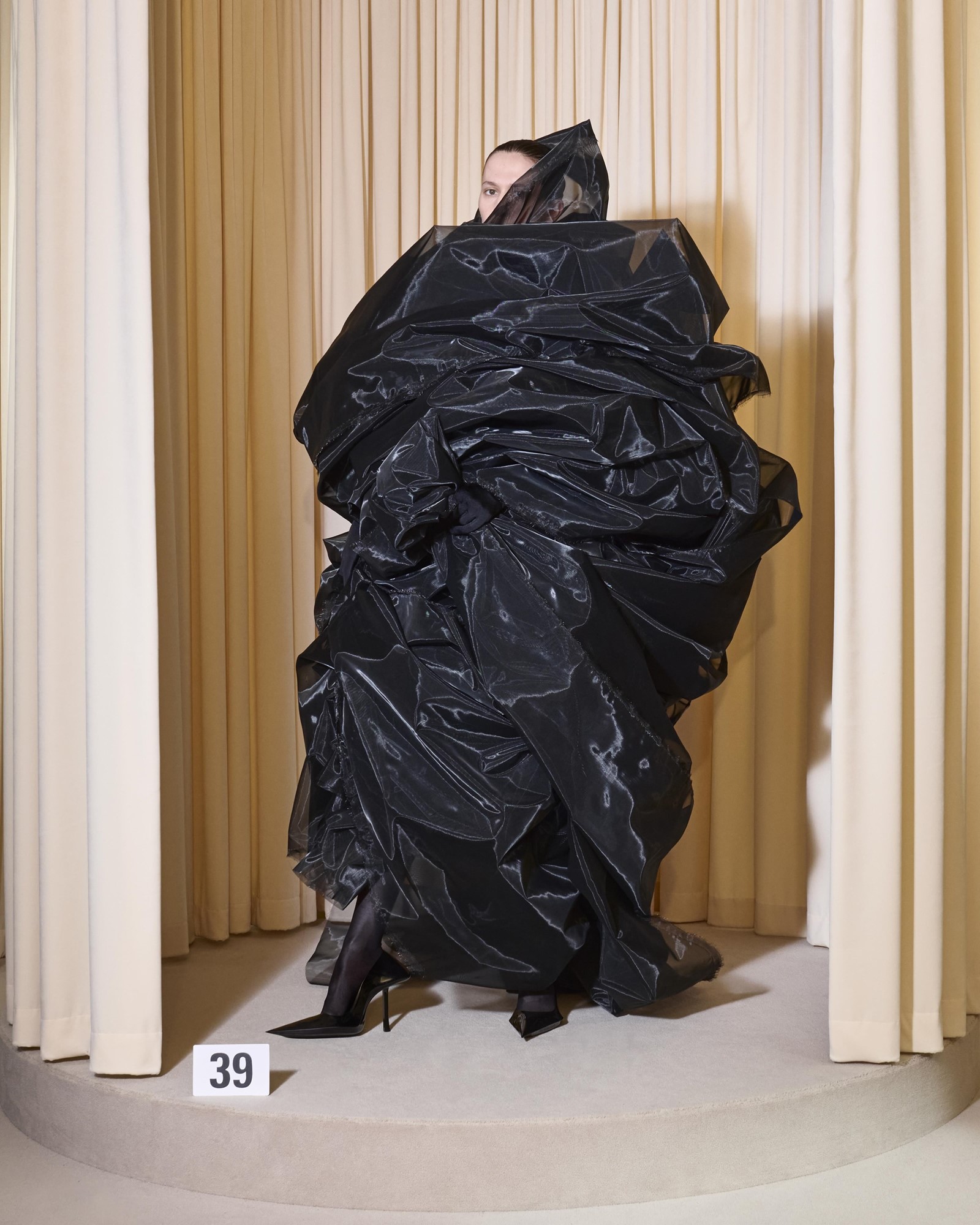
Balenciaga’s extravagant hats were obviously present. Materiality was more subtle. Dresses were executed in upcycled plastic bags moulded to the body, or crinkled aluminium. Both approximated Cristóbal Balenciaga’s beloved gazar, a loosely-woven lightweight silk with paradoxically sculptural qualities invented for Balenciaga in 1958 and used to achieve the master’s favoured gravity-defying shapes. “We couldn’t find gazar – people don’t make it anymore,” Demna recalled. “Then we found a machine that could make it, but we couldn’t find someone who knew how to use it. They’d all died. So we thought: what’s the gazar of now?” The answer was the aforementioned plastics and foil, but also the final dress – “in a primitive state” – draped from 47 metres of nylon crin, material that is usually used invisibly, inside couture dresses today to balloon shapes out to the volumes desired. Demna made it the main attraction, directly working it on the body. “It was an ephemeral dress,” he said. “It didn’t exist 30 minutes before the show.”
That also connects to what Demna sees as the real reason for couture today: “The experience of wearing clothes. That’s what I love about couture,” he said. “And I wanted to bring even further to that idea of experience, almost performance. So that dress only exists for this event. If someone wants to buy this dress, we will drape it and do it for that one event – it will be an experience!”
This show was an experience, too – namely because everything looked like something it wasn’t. It was also wilfully, deliberately provocative, a fully questioning of the nature and meaning of couture by someone who is genuinely trying to push it forwards. Debate will rage about the worthiness of these clothes, whether they deserve to be called couture – but the work in their craft justifies the label (and besides, Demna once told me that every time they offered denim in couture it was a bestseller). But also, is that provocation the true legacy of Cristóbal Balenciaga? I’m reminded of Carmel Snow, writing about Balenciaga’s unfitted suits: “They sat there hating them … you could feel the hate in the room. Instead of the ‘Bravos!’ that greeted Dior, there was an uneasy silence when the showing was over.” There is, of course, no silence on the internet, where ire is immediately communicated. But I’d say this collection deserves to be applauded. God was in the details, and at Balenciaga they are truly mind-boggling. Look before you judge.

